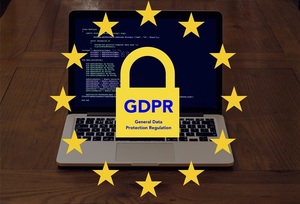Understanding GDPR Data Breach Reporting: Requirements and Best Practices
Body
In May 2018, the European Union’s General Data Protection Regulation (GDPR) came into effect, creating a unified set of data protection laws across the EU. One of the most significant changes introduced by GDPR was the requirement for organizations to report data breaches to both data protection authorities and affected individuals. This article will explain GDPR data breach reporting requirements and what organizations need to do to comply with them.
What is a Data Breach?
A data breach is any unauthorized access, disclosure, or loss of personal data. Personal data is any information that can be used to identify an individual, such as names, addresses, phone numbers, email addresses, bank account details, medical information, or even IP addresses. Data breaches can occur in various ways, including cyberattacks, employee errors, physical theft, or even accidental loss.
GDPR Data Breach Reporting Requirements
Under GDPR, organizations that experience a data breach must report it to the relevant supervisory authority within 72 hours of becoming aware of it. In some cases, they must also notify the affected individuals without undue delay. The supervisory authority is the data protection regulator in the EU country where the organization has its main establishment or is based.
The notification must include:
- The nature of the personal data breach, including the number of individuals affected and the types of personal data involved.
- Contact details of the organization’s data protection officer (DPO) or other contact person.
- The likely consequences of the breach.
- The measures taken or proposed to be taken to address the breach and prevent future incidents.
If it is not possible to provide all this information at once, the organization can provide it in phases, as long as the initial notification contains the basic information.
When to Notify Individuals?
In addition to notifying the supervisory authority, organizations must also notify affected individuals if the breach is likely to result in a high risk to their rights and freedoms. This could include situations where sensitive personal data is involved, such as health or financial information, or if the breach could result in identity theft or financial loss.
The notification to individuals should be clear and concise, providing them with the same information included in the notification to the supervisory authority. It should also explain the steps the organization is taking to mitigate the breach’s impact and the measures individuals can take to protect themselves.
Failure to comply with GDPR data breach reporting requirements can result in fines of up to €20 million or 4% of the organization’s global annual revenue, whichever is higher.
How to Prevent Data Breaches?
Organizations can take several steps to prevent data breaches, including:
- Conducting regular risk assessments to identify and mitigate potential risks.
- Implementing appropriate technical and organizational measures to ensure the security of personal data.
- Providing regular training to employees on data protection and cybersecurity best practices.
- Creating an incident response plan to enable quick and effective responses to data breaches.
- Regularly reviewing and updating security policies and procedures.
Conclusion
GDPR data breach reporting requirements are an essential part of the regulation, aiming to ensure organizations take their data protection responsibilities seriously. By reporting data breaches promptly and accurately, organizations can minimize the harm caused to affected individuals and demonstrate their commitment to data protection. By implementing appropriate technical and organizational measures and providing regular training to employees, organizations can also reduce the likelihood of data breaches occurring in the first place.














Comments